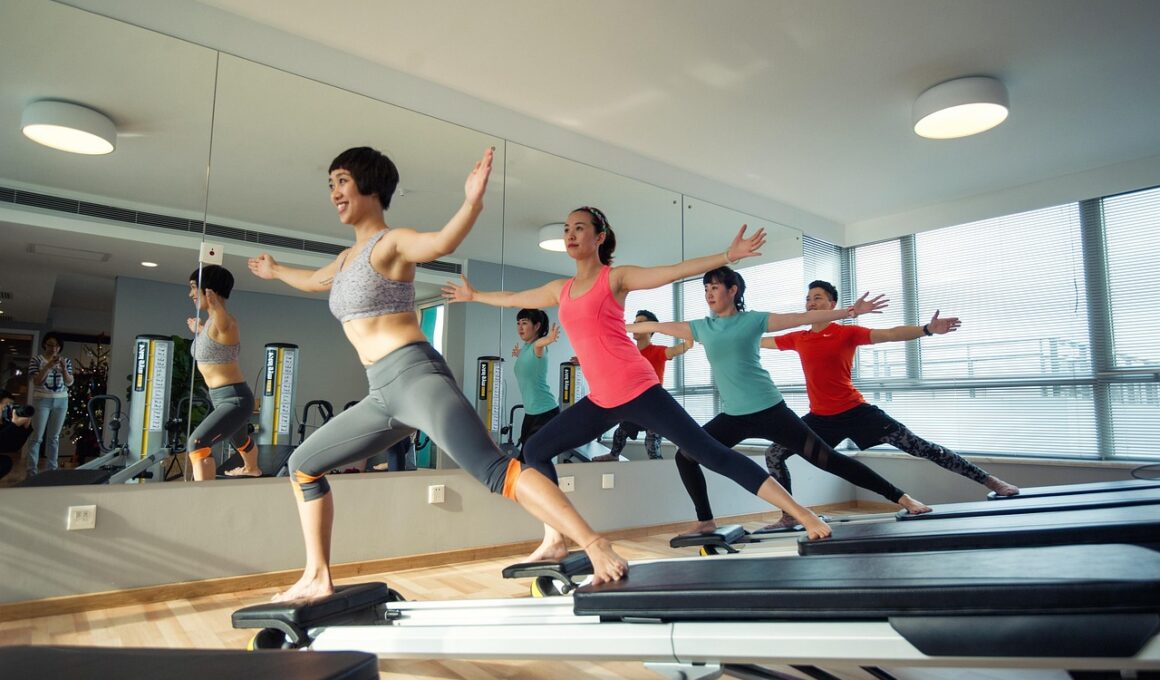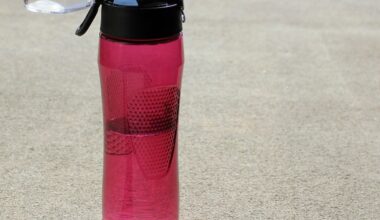DIY Repairs for Minor Pilates Equipment Damages
Maintaining your Pilates equipment in excellent condition is essential for ensuring a safe and effective workout. While minor damages can be concerning, many repairs can be completed easily and efficiently without the need for professional services. First, identify the type of damages affecting your equipment, whether it is a tear, squeak, or loose screws. Commonly used equipment like reformers, stability balls, or mats can often face such minor issues. For instance, a torn reformer strap can be replaced with a similar material found at fabric stores, while squeaky plastic wheels on reformers can benefit from lubricating oil. There are many tutorials available online that can guide you through the process of repairing these issues. You can find reliable information on platforms such as YouTube or Pilates-oriented blogs. Remember to document the repair process, as this information may be helpful for future fixes or maintenance. Investing time in DIY repairs not only saves costs but also enhances your knowledge about the equipment itself, allowing you to better care for your belongings. Stay proactive in maintaining your gear and enjoy the benefits of your efforts in the long run.
One of the most straightforward repairs you can accomplish is tightening loose screws. This issue is common with Pilates reformers, which can experience wear and tear due to repeated use. To begin, identify any screws that have loosened over time. Using a compatible screwdriver, gradually apply pressure and turn the screws clockwise until they are snug. Make sure not to overtighten, as this could strip the screw thread or damage the wood or plastic. In the case that screws need replacement, it’s advisable to take the old screws with you to a hardware store to find appropriate replacements. Furthermore, while you’re at the store, it’s wise to invest in some basic tools if you don’t have them already, such as screwdrivers, pliers, and a wrench, which will serve you well as you maintain your equipment. Always check your equipment and be proactive about any minor repairs; small issues can become larger over time if left unattended, compromising your Pilates workouts. Regular maintenance should become part of your routine, ensuring a seamless Pilates experience every time you step onto the mat or equipment.
Repairing Tears and Frays
A common issue with mat-based workouts involves equipment, such as mats, developing tears or frays. If you notice a tear in your mat, begin by assessing its size. If the tear is small, you may effectively use fabric glue or adhesive patches specifically created for this purpose. Clean the area around the tear and apply the adhesive according to the product instructions. Make sure to let it dry fully before using the mat again. For larger rips, consider sewing the torn edges together using a needle and strong thread. This method can help prolong the mat’s life significantly. In addition, when dealing with frayed edges, trimming them carefully can prevent further damage and provide a neater appearance. Always be mindful of using materials that match your mat’s type, such as vinyl for thicker mats. Consider investing in high-quality equipment from the start to minimize everyday wear and tear. Lastly, using a mat cover during workouts can offer extra protection. To extend the lifespan of your equipment, be diligent in monitoring it regularly for any early signs of wear.
Another notable repair involves equipment surfaces that often acquire scratches or scuffs. These imperfections might not affect functionality, but they can detract from the equipment’s overall appearance. Using a microfiber cloth, gently wipe the scratched area to remove dust or debris. To repair light scratches, consider using a polish specifically designed for your equipment’s material, for example, a wood polish for wooden equipment or a plastic polish for reformers. Apply the polish, following the product instructions, in a uniform manner to avoid streaks. For deeper scratches, using a finer grit sandpaper can help smoothen the surface. However, be cautious and gentle not to over-sand or damage the surrounding areas of the equipment. After sanding, always polish to restore the finish. This simple maintenance technique will keep your Pilates equipment looking fresh and inviting! Additionally, performing this routine can enhance the performance and longevity of your equipment. As you become more familiar with these maintenance tasks, you will feel empowered to take better care of your gear, ensuring a consistent workout environment conducive to success.
Maintaining Springs and Cables
The springs and cables on Pilates reformers are vital for providing resistance during workouts. Over time, these components can wear out or experience fraying, necessitating replacement to avoid injuries. To maintain springs, regularly inspect them for rust or wear, misconceptions often suggest that merely a visual inspection is sufficient. Instead, every few months, remove any dirt using a damp cloth and inspect the integrity by stretching them lightly. If you spot any significant wear or fraying, it’s essential to replace them immediately. Springs can often be purchased from Pilates equipment suppliers, making replacements more convenient. When replacing cables, ensure you have the correct length and configuration for your specific equipment model. Consult the user manual or manufacturer’s website for detailed instructions on accessing and swapping them. This preventative measure ensures your Pilates sessions remain safe and efficient. New springs and cables will restore optimal tension and provide the necessary support for an engaging workout. Remember, safety should always be the priority when it comes to Pilates practices, as well-maintained equipment plays a significant role in performance and injury prevention.
In addition to springs and cables, keeping your reformer tracks clean is crucial for smooth functionality. Dust, dirt, or grime can accumulate over time, leading to unnecessary friction that can damage the equipment. To maintain clean tracks, periodically wipe down the metal rails with a clean cloth and mild cleaning solution, ensuring the cloth is damp rather than wet. This step helps to avoid water damage or corrosion. In cases of stubborn grime or stuck-on debris, using a soft-bristle brush can provide effective scrubbing without scratching. It’s also essential to maintain the wheels, which can be lubricated with appropriate products designed for plastics to ensure a smooth glide during exercises. Regularly checking for signs of wear, such as chips or cracks, on the wheels can prevent future issues. By establishing a regular equipment-cleaning schedule, you can guarantee efficient performance and enhance the lifespan of your Pilates apparatus. Remember always to follow manufacturer recommendations regarding cleaning solutions and techniques. Taking these measures ensures your workouts are unimpeded by equipment malfunctions, maximizing the overall Pilates experience.
Final Thoughts on Pilates Equipment Maintenance
DIY repairs and consistent maintenance are key to preserving the integrity of your Pilates equipment. Understanding how to perform simple repairs not only extends equipment longevity but also enhances your overall fitness journey. Staying proactive will prevent small issues from evolving into larger, costlier problems that may disrupt your routine. Regular inspections can identify potential concerns early, allowing you to address them promptly. Always ensure you keep a toolkit at hand with essential items like screwdrivers, adhesives, and clean cloths so that you are well-prepared. Researching and learning how to make various minor repairs empowers you and enhances your familiarity with your equipment. This becomes particularly beneficial in maintaining a smooth Pilates experience. Additionally, fostering a commitment to equipment care reflects your dedication to the practice itself. Participate in community forums online focused on Pilates equipment, where individuals share tips and techniques they’ve learned. Staying engaged with fellow enthusiasts can also lead to more knowledge and shared experiences. Through care and maintenance, you can create a safer and more enjoyable environment for your Pilates workouts.
Lastly, engaging in discussion with other Pilates practitioners can provide you with valuable insights and ideas regarding equipment maintenance. Share any tips you’ve learned from your own repairs and listen to their experiences. You might discover new methods or products that can enhance your repair processes. Additionally, consider documenting your DIY projects in a blog or social media to inspire others within the Pilates community. Networking can also lead to discovering workshops or classes that focus on Pilates equipment maintenance. This investment in knowledge further cements your understanding of the equipment and its upkeep. Emphasizing the importance of regular maintenance ensures that not only your equipment stays in top shape, but you also cultivate a richer Pilates practice. With this kind of awareness, you’ll be able to fully enjoy every moment spent on the mat or equipment. Ultimately, DIY repairs can shift from a necessity into a rewarding aspect of your Pilates journey. Always remember that minor repairs contribute towards a greater goal: your overall wellness and fitness. Embrace this aspect of Pilates wholeheartedly and witness its positive effects both on your body and mind.


